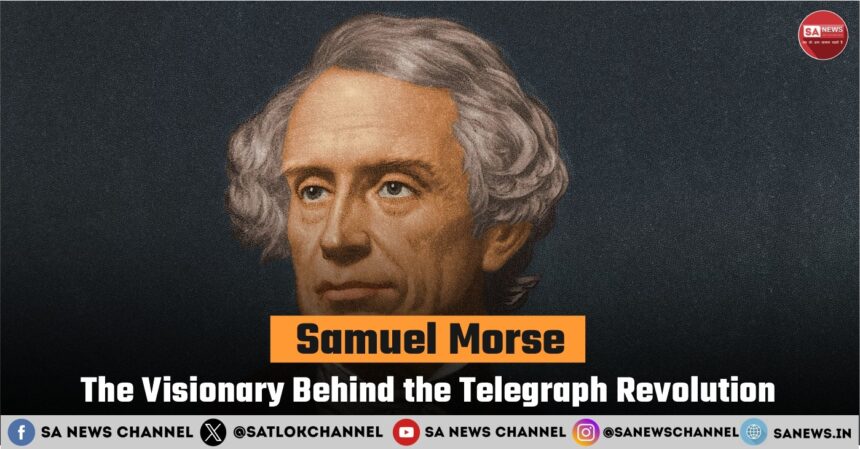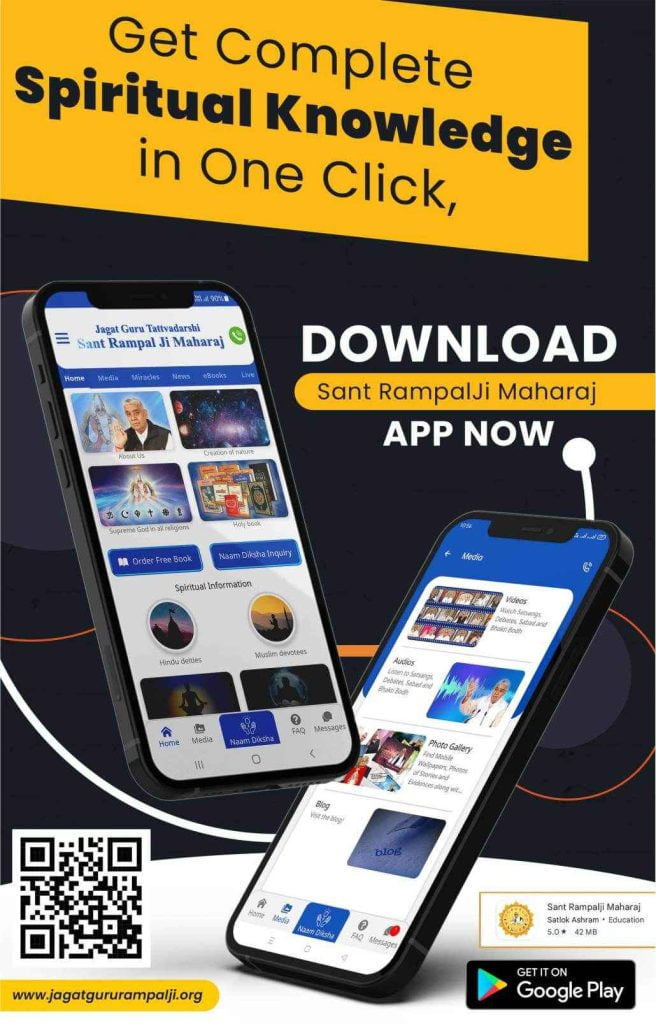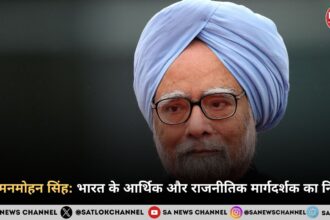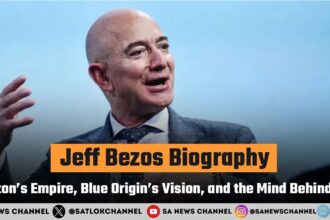In the early 19th century, when letters took weeks to reach and distance was a barrier to communication, one man dared to dream of connecting people through invisible signals traveling at lightning speed. That man was Samuel Finley Breese Morse, a name that changed the world of communication forever. He wasn’t just an inventor, he was an artist, a dreamer, and a believer in persistence.
- Early Life and Education: A Painter in the Making
- The Artistic Chapter: Painting the Soul of America
- A Tragic Turning Point: From Art to Invention
- The Birth of the Telegraph: When Vision Met Science
- Struggles for Recognition and Funding
- The Telegraph Revolution and Global Impact
- Challenges, Rivalries, and Legal Battles
- Later Years: Honor and Faith
- Inspiration Beyond Invention
- The Legacy of a True Communicator
- Famous Quotes by Samuel Morse
- Spiritual Perspective: A Higher Truth: Using Human Life for Worship and the Search for the Supreme God
- FAQs About Samuel Morse
Morse’s life story is more than a tale of technological progress; it’s a journey of faith, failure, and unbreakable spirit. His invention of the telegraph and the creation of Morse Code not only revolutionized human interaction but also laid the foundation for modern communication systems, from telephones to the internet.
Early Life and Education: A Painter in the Making
Samuel Morse was born on April 27, 1791, in Charlestown, Massachusetts, USA. His father, Jedidiah Morse, was a respected geographer and a clergyman, while his mother, Elizabeth Ann Finley Breese, came from a family of strong moral values and intellect.
From childhood, Samuel showed a natural talent for art. While his father wanted him to pursue a more conventional career, his heart leaned toward painting and creativity. After completing his early education at Phillips Academy in Andover, he attended Yale College, where he studied philosophy, mathematics, and science, subjects that would later blend seamlessly into his inventive genius.
At Yale, Morse attended lectures on electricity, an emerging scientific field at that time. He didn’t realize it then, but those sparks of curiosity would one day ignite one of humanity’s greatest inventions.
The Artistic Chapter: Painting the Soul of America
Before he became an inventor, Morse was known as a portrait painter of great talent. After graduating in 1810, he traveled to England to study art under the guidance of famous painters like Washington Allston and Benjamin West. His work reflected passion and emotion, focusing on human expression and moral strength.
One of his early successes was the painting “The Dying Hercules”, which displayed both physical strength and inner struggle, perhaps a silent reflection of Morse’s own challenges in life.
When he returned to America, Morse worked as a portrait artist for several years. He painted notable figures, including former U.S. President John Adams. Yet despite his skill, the profession didn’t bring him financial stability. The art market was inconsistent, and commissions were rare. Still, Morse remained devoted to his craft, believing that creativity and persistence would eventually pay off.
A Tragic Turning Point: From Art to Invention
Life often takes unexpected turns, and for Morse, it came in the most heartbreaking form. In 1825, while painting in Washington, D.C., he received a letter that his beloved wife Lucretia Pickering Walker Morse had fallen gravely ill back in New Haven.
He rushed home, but by the time he arrived, she had already passed away. The message had reached him too late, and this unbearable delay changed his life forever.
That tragedy awakened in him a burning desire to find a faster way to communicate, a way to send urgent messages instantly, regardless of distance. His artistic dreams slowly faded into the background as a new mission took root in his heart: to invent a system that could bridge human separation.
The Birth of the Telegraph: When Vision Met Science
Morse’s transition from art to invention wasn’t easy. He had limited scientific training and little money. But he possessed two powerful tools, curiosity and determination.
In 1832, while returning from a trip to Europe, Morse heard a conversation about electromagnetism and electrical experiments. That very night, on the deck of the ship, he sketched the first concept of an electrical telegraph, a device that could send signals through wires using electric pulses.
He spent years experimenting, learning about electricity, and building prototypes. By 1837, he successfully demonstrated his invention, with the help of scientists like Leonard Gale and Alfred Vail, who later became his partner.
To make the system efficient, Morse also developed a unique code of dots and dashes, now known as Morse Code, representing letters and numbers. This simple yet brilliant system could be learned easily and transmitted quickly, making it a universal language of communication.
Struggles for Recognition and Funding
Even after inventing the telegraph, Morse’s path was filled with obstacles. He faced skepticism, financial crises, and political delays. Few people believed in the practicality of his idea.
For years, he traveled to Washington, D.C., demonstrating his invention to government officials, hoping for funding. Finally, in 1843, the U.S. Congress approved a grant of $30,000 to build the first telegraph line between Washington, D.C., and Baltimore.
On May 24, 1844, Samuel Morse sent the first official telegraph message, a moment that changed history. The words were taken from the Bible:
“What hath God wrought?” (Numbers 23:23)
That message marked the beginning of a new era — the birth of instant, long-distance communication.
The Telegraph Revolution and Global Impact
The success of Morse’s telegraph was nothing short of revolutionary. Within a few years, telegraph lines spread across the United States, connecting cities and enabling people to share news within minutes instead of weeks.
Also Read: Jeff Bezos Biography: Amazon’s Empire, Blue Origin’s Vision, and the Mind Behind Both
By the 1850s, the technology had crossed oceans and continents, shaping global politics, trade, and journalism. Wars were coordinated, business deals were made, and families stayed connected, all because of Morse’s innovation.
He had not only invented a device but had also united humanity through communication.
Challenges, Rivalries, and Legal Battles
As the telegraph gained popularity, many inventors tried to claim credit or profit from Morse’s creation. He faced numerous patent battles and legal disputes to protect his rights. Although he eventually won recognition as the principal inventor, the journey was emotionally draining.
Still, Morse remained grounded and often attributed his success to divine providence. He once said:
“I have made a valuable application of electricity, not because I was wiser than others, but because God meant it to be revealed through me.”
His humility and faith reflected a man who saw invention not as a tool for fame, but as a service to humanity.
Later Years: Honor and Faith
In his later years, Morse received recognition from around the world. He was awarded medals, honorary degrees, and international honors from countries like France, Denmark, and Portugal.
Despite his achievements, he lived a modest and spiritual life. He used much of his wealth for charitable causes, supporting education, religious institutions, and artists.
Morse spent his final years peacefully with his family in New York. He passed away on April 2, 1872, leaving behind a world forever changed by his vision.
Inspiration Beyond Invention
Samuel Morse’s story is not merely about technology; it’s a story about faith, perseverance, and purpose. He began his life as a painter, expressing emotions on canvas, and ended it as an inventor, expressing connection through electricity.
His transformation shows that no knowledge or experience ever goes wasted, art taught him patience, precision, and imagination, while science gave him the tools to shape those qualities into something revolutionary.
He turned personal tragedy into a global solution, proving that pain, when guided by purpose, can illuminate the path of progress.
The Legacy of a True Communicator
Today, every text message, email, or digital signal we send owes its existence to the foundation laid by Samuel Morse. His work bridged continents, hearts, and minds, transforming how humanity connects.
Morse’s life teaches us that vision and faith can turn even sorrow into innovation. He proved that no dream is too distant if you believe in your purpose and trust the guidance of the Almighty.
Samuel Morse was not just the inventor of the telegraph, He was the architect of global communication, the artist of invisible lines, and the believer who turned loss into light.
Famous Quotes by Samuel Morse
1.“What hath God wrought.”
🕊️ — First telegraph message, May 24, 1844
(A timeless acknowledgment that all human achievement is ultimately by the will of the Supreme God.)
2. “I have made a valuable application of electricity, not because I was wiser than others, but because God meant it to be revealed through me.”
⚡ — Samuel Morse
(A powerful statement of humility and faith in divine guidance.)
3. “The more I study nature, the more I stand amazed at the work of the Creator.”
🌿 — Samuel Morse
(Shows his deep reverence for the Supreme Power behind creation.)
4. “My invention is merely a messenger of God’s will — connecting hearts and nations through His wisdom.”
🌎 — Samuel Morse
(Expresses how he viewed his invention as a divine tool for unity, not pride.)
5. “Science is the servant of God’s truth, not its rival.”
💡 — Samuel Morse
(A reminder that real knowledge and invention must always remain aligned with divine purpose.)
Spiritual Perspective: A Higher Truth: Using Human Life for Worship and the Search for the Supreme God
Morse’s first telegraph message, “What hath God wrought”, wasn’t just a phrase; it was a humble acknowledgment that the power to create comes from the Supreme Being. It reminds us that human intelligence, no matter how advanced, is ultimately guided by divine wisdom.
As explained by Chyren Saint Rampal Ji Maharaj, all inventions, discoveries, and progress are part of God’s divine plan, but true success lies in realizing the Creator Himself through true devotion. Samuel Morse’s gratitude toward God reflects that higher understanding, that invention without devotion is incomplete.
Human life is extraordinarily precious, it is granted not merely to build or explore the world, but to seek the Supreme God, learn the true method of worship, and attain liberation from the endless cycle of birth and death. As explained at www.supremegod.org, the Supreme God is eternal, compassionate, and attainable only through true spiritual guidance.
Samuel Morse’s gratitude toward God reminds us that while progress enriches our world, devotion enlightens our soul. Therefore, let us not waste this rare human birth in worldly distractions, but use every breath to worship in the right way and search for that Supreme Power who alone can grant eternal peace and salvation.
FAQs About Samuel Morse
1. Who was Samuel Morse and what is he famous for?
Samuel Finley Breese Morse (1791–1872) was an American painter and inventor best known for creating the telegraph system and co-developing the Morse Code, a revolutionary communication method using dots and dashes. His invention transformed global communication by making it possible to send messages instantly over long distances.
2. What inspired Samuel Morse to invent the telegraph?
The invention was born from personal tragedy. In 1825, Morse’s wife passed away while he was away on work, and the delayed message of her illness reached him too late. Deeply affected by this, he resolved to find a faster means of communication, which ultimately led to the creation of the electric telegraph.
3. What was the first telegraph message Samuel Morse sent?
On May 24, 1844, Samuel Morse sent the first official telegraph message from Washington, D.C., to Baltimore. The message read:
“What hath God wrought”
This biblical phrase (Numbers 23:23) symbolized not only a technical milestone but also Morse’s gratitude and acknowledgment of divine power.
4. How did Samuel Morse’s invention change the world?
The telegraph revolutionized communication by reducing the time required to send information from weeks to mere minutes. It laid the foundation for modern communication systems, including the telephone, radio, and internet. It also transformed journalism, business, and global diplomacy, uniting the world like never before.
5. What spiritual lesson can we learn from Samuel Morse’s life?
Samuel Morse’s faith-filled life teaches that every human talent is guided by divine will. His first message, “What hath God wrought,” reminds us to recognize the Supreme God as the true source of wisdom and power. As explained at www.supremegod.org, human life is precious and should be used to worship the Supreme God in the right way and seek salvation through true spiritual knowledge.









